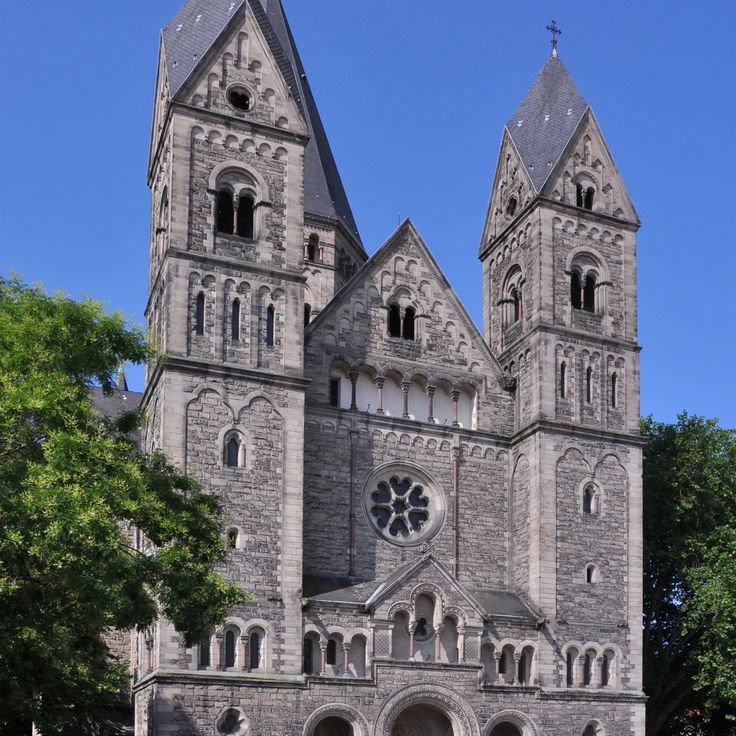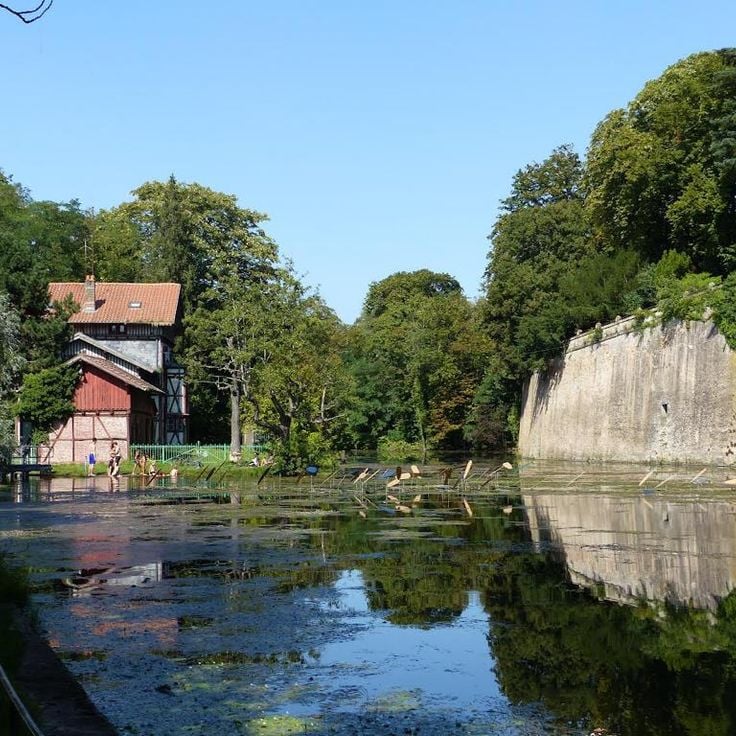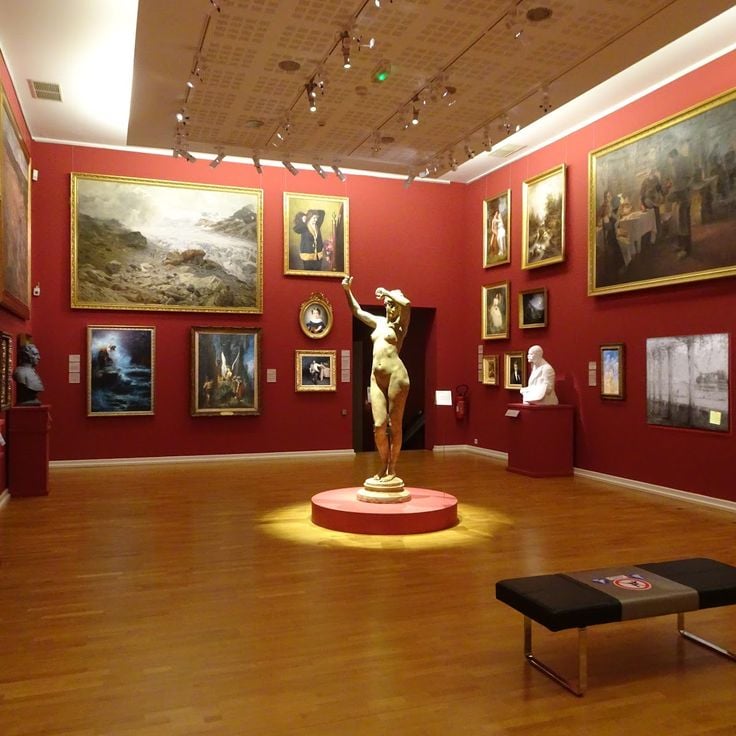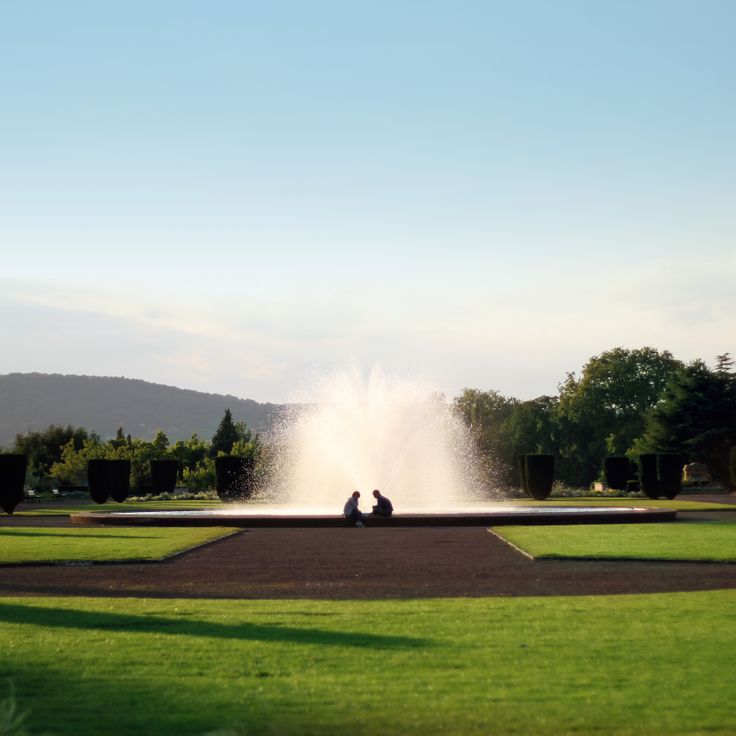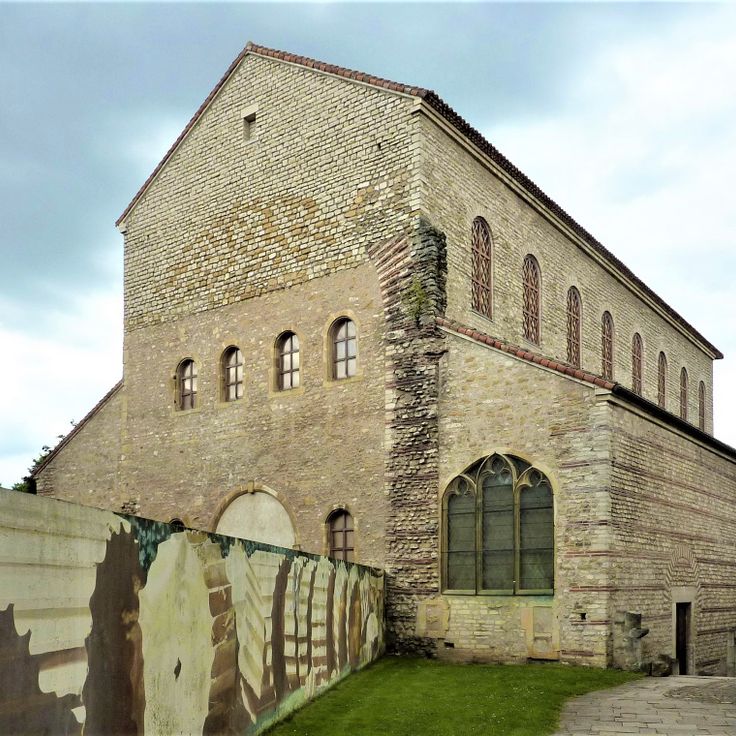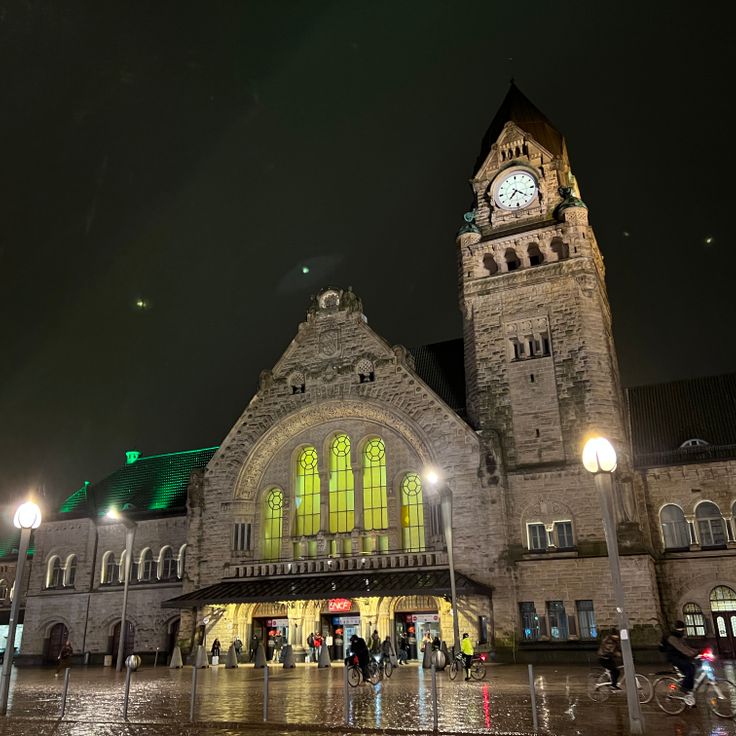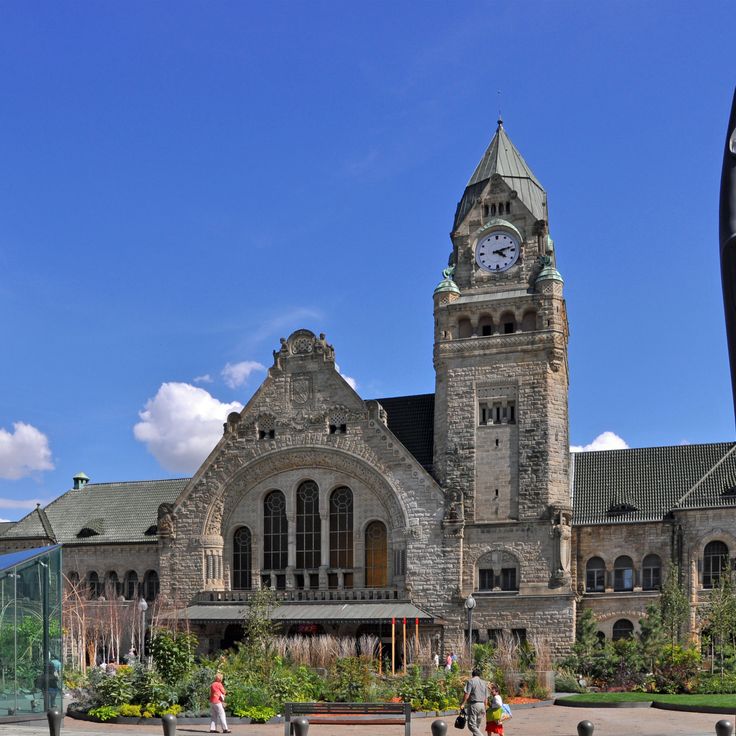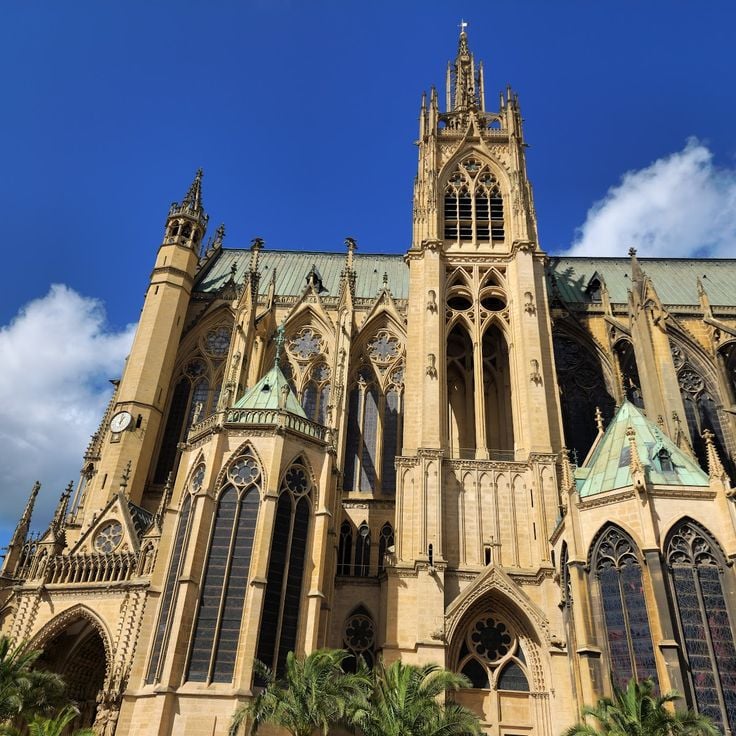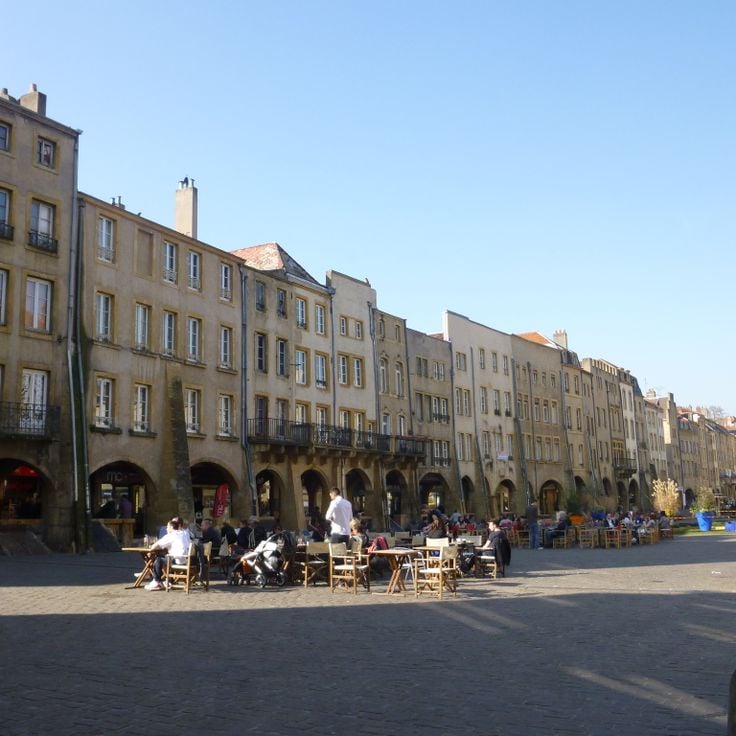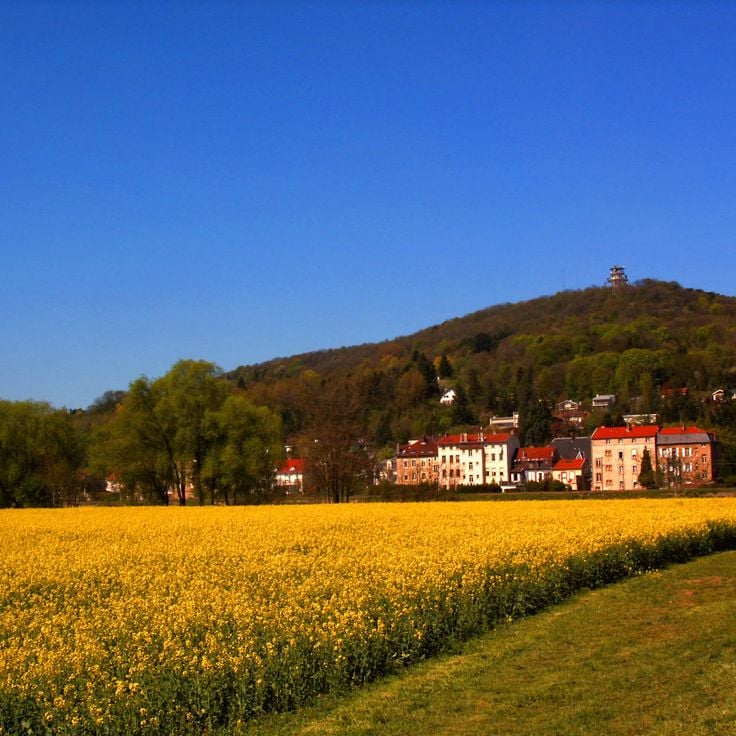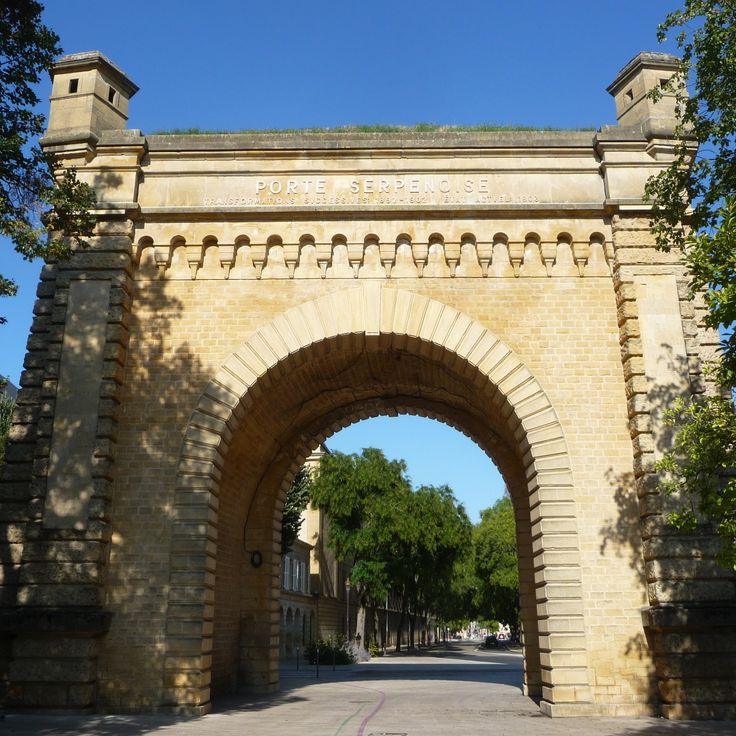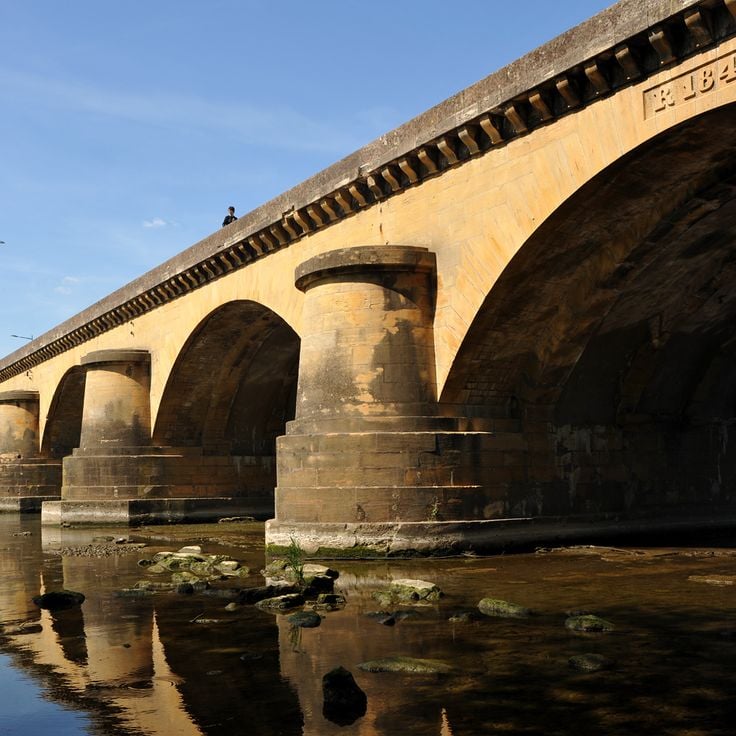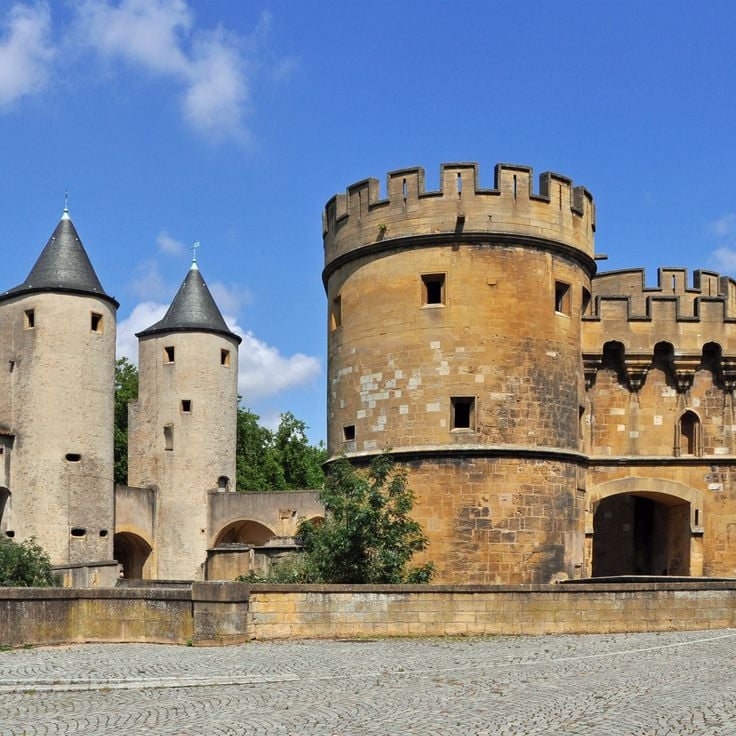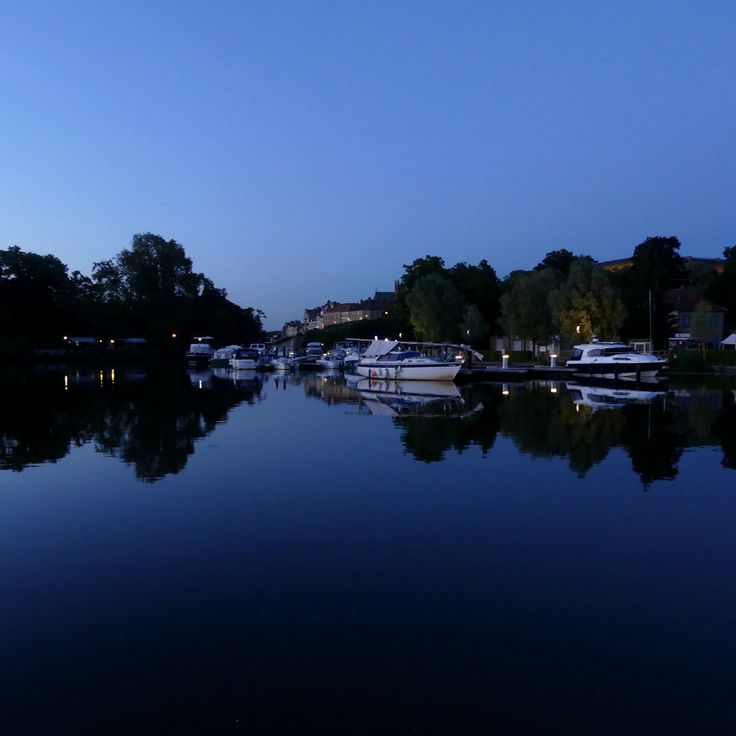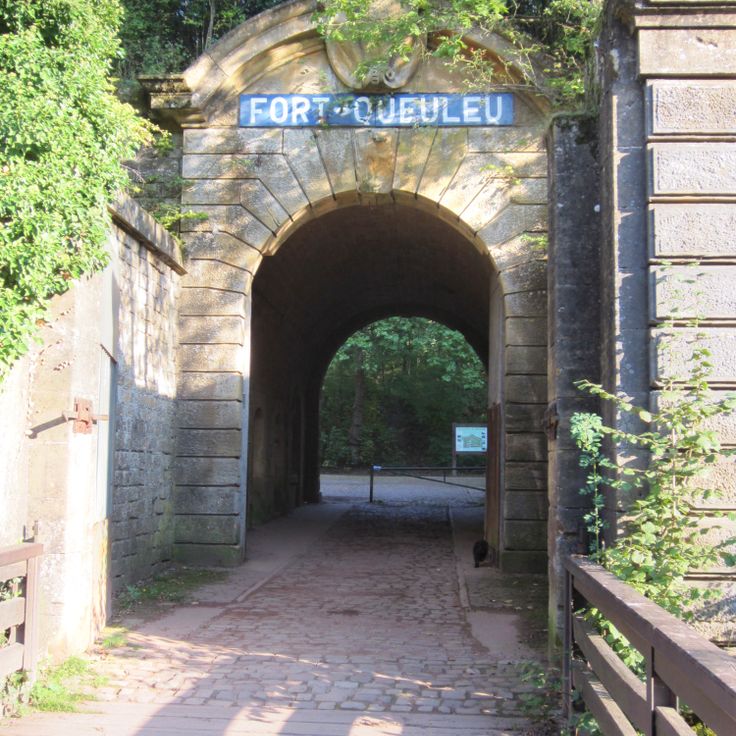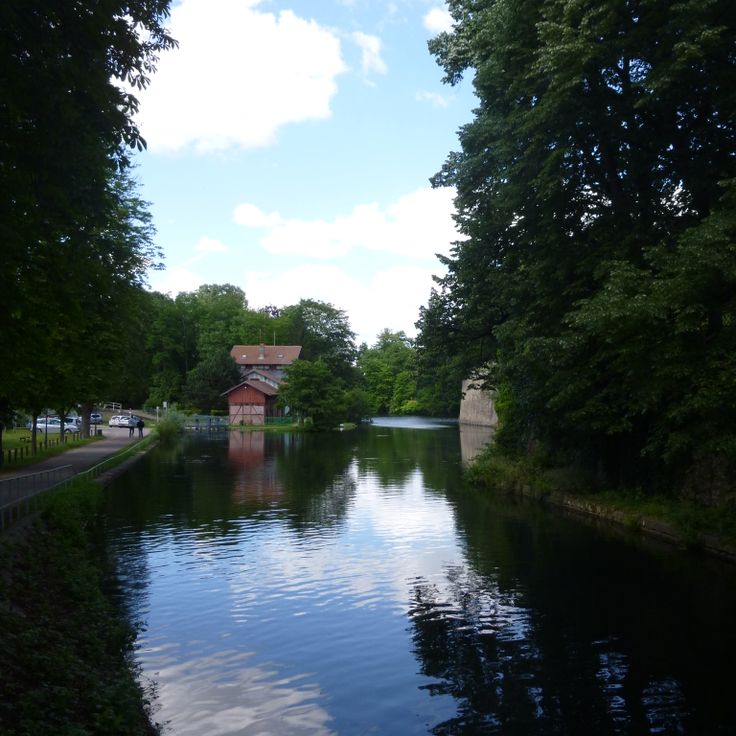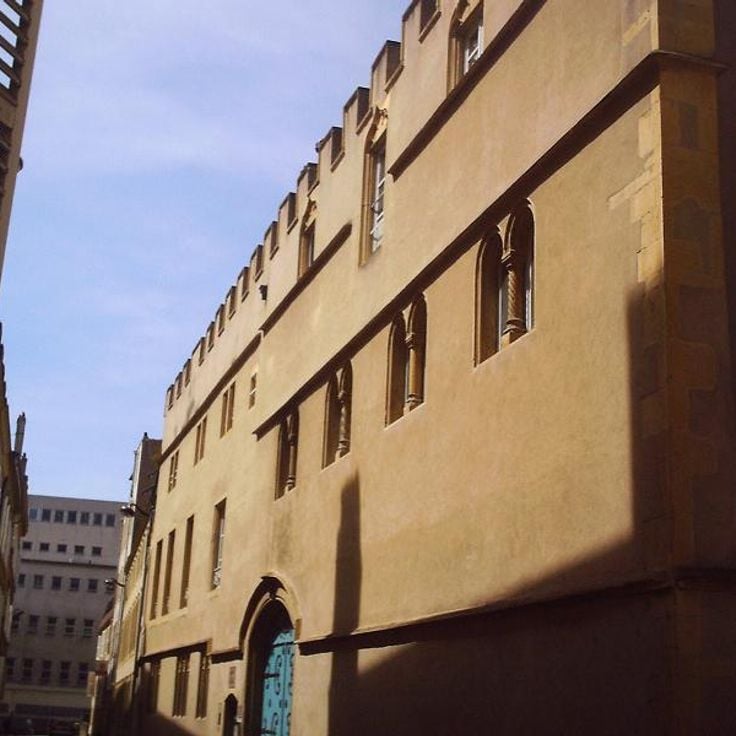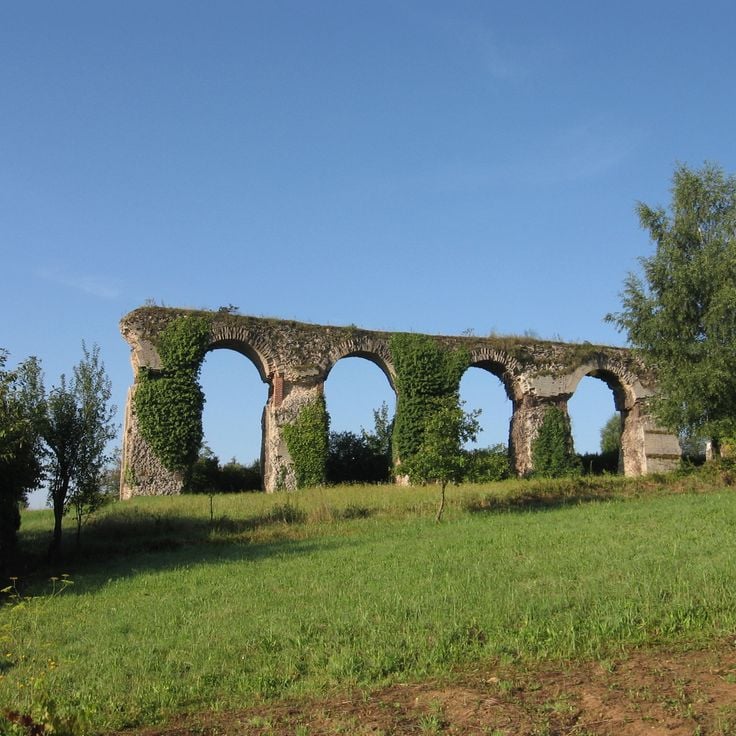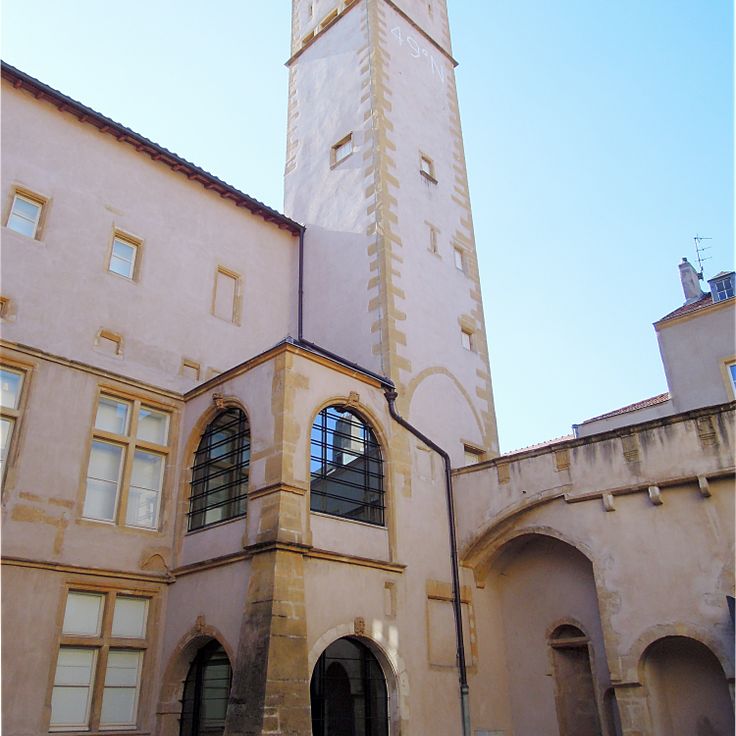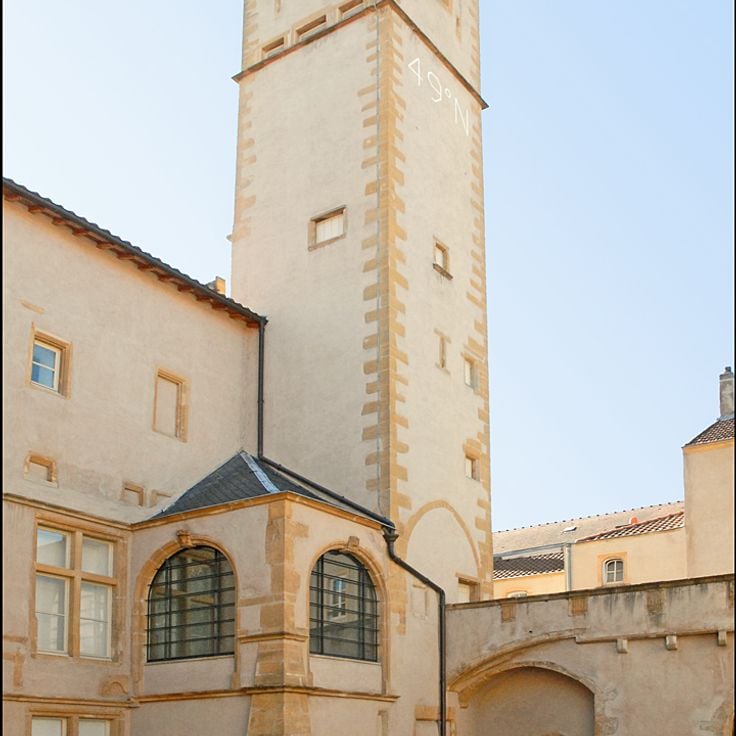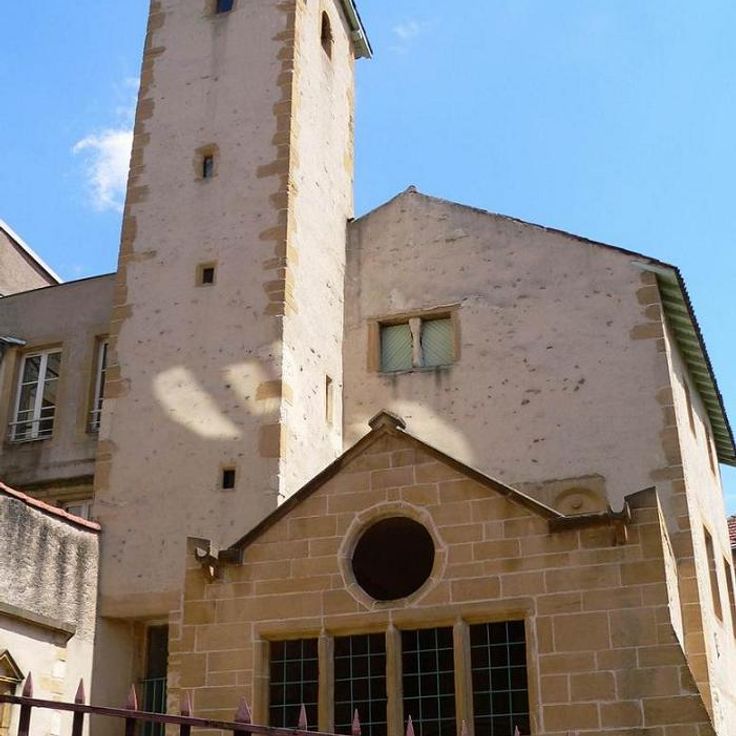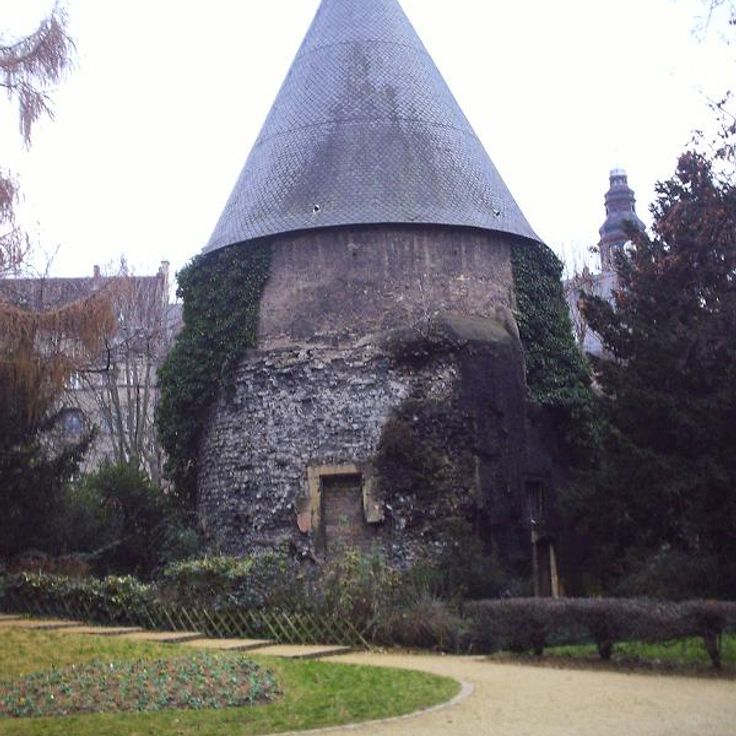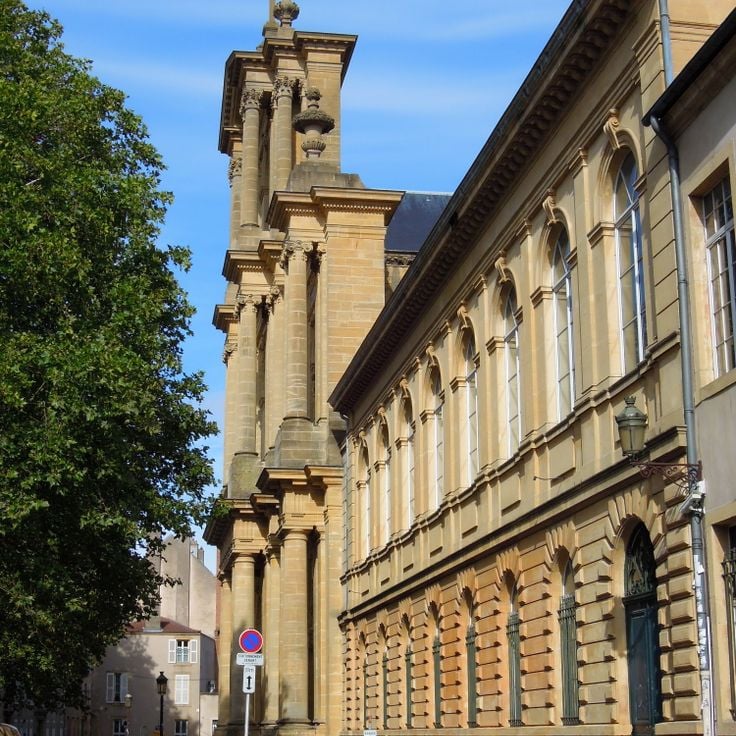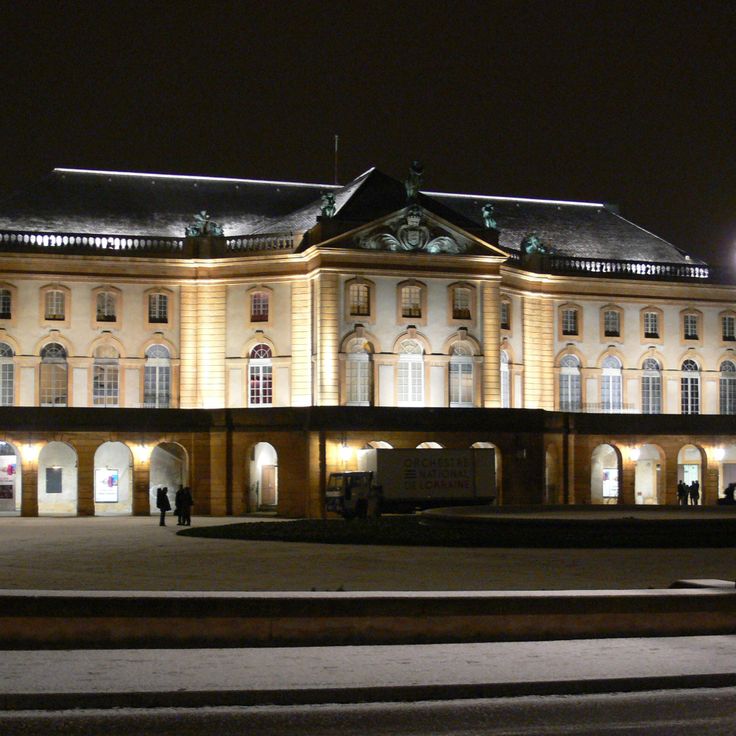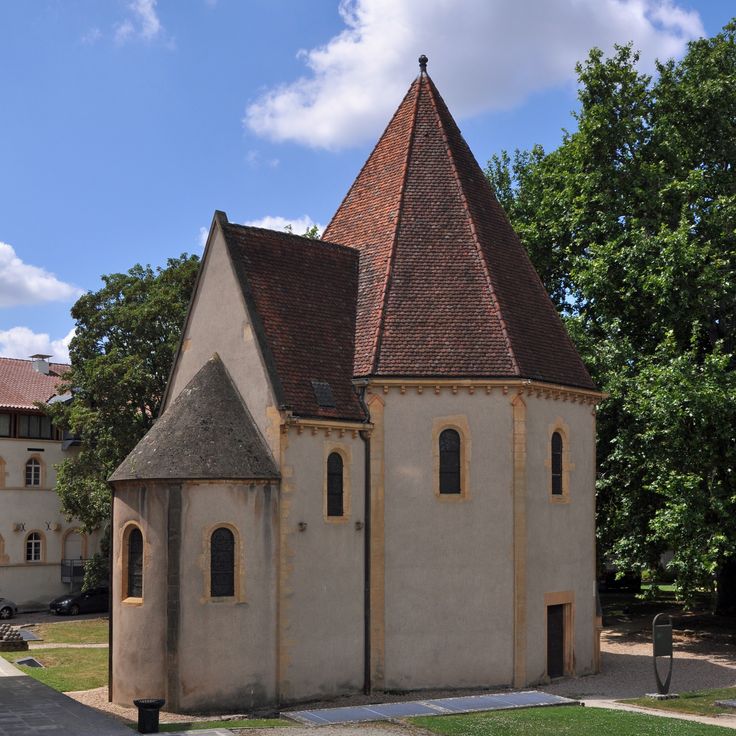Metz offers numerous scenic locations that highlight its history and architectural development. The city features notable buildings such as Saint-Étienne Cathedral with its 6,500 square meters of stained glass from the 13th to the 20th century, the Neo-Romanesque New Temple with its reflections on the Moselle, and the Gare-Palais built in 1908 with its clock tower and carved stone details. The Botanical Garden hosts collections of rare plants and a greenhouse showcasing tropical and Mediterranean vegetation, while the Water Plan near the city center offers interesting views with reflections on the water surface. Remnants of the past are visible throughout the city. Saint-Pierre-aux-Nonnains Basilica, a Roman structure from the 4th century converted into a church, stands next to the Cour d'Or Museum located in medieval buildings displaying Roman remains and regional art collections. The Imperial Quarter reveals neo-Romanesque and neo-Renaissance architecture from 1871-1918, with stone facades and characteristic decorative elements. From Mount Saint-Quentin at 358 meters above sea level, one can observe the valley of the Moselle and the urban complex. These sites form a varied visual journey through the city's historical eras and architectural styles.
The Temple Neuf was built in 1904 in neo-Romanesque style and stands on a small island in the Moselle River. This Protestant church offers interesting photography opportunities from the riverside promenades, particularly through the water reflections that surround the building.
The Metz Water Garden is an artificial lake located near the city center, surrounded by walking paths, bridges and green spaces. This site offers good opportunities for photography with water reflections and provides various perspectives along the waterfront promenade.
The Metz Botanical Garden features collections of rare plants, seasonal flowers and themed areas. The glass greenhouse displays tropical and Mediterranean vegetation throughout the year.
The Cour d'Or Museum occupies medieval buildings and presents Roman archaeological finds, Gothic architectural elements and regional art collections distributed across several exhibition rooms. The collection includes objects from the Gallo-Roman period, religious sculptures and paintings by local artists.
The Esplanade Gardens present themselves as a public park with symmetrically arranged flowerbeds crossed by stone pathways. Between the carefully trimmed trees stand several bronze sculptures that visitors encounter along the various alleys. This green space combines French horticultural design with urban recreation in the heart of Metz.
Saint-Pierre-aux-Nonnains Basilica is a Roman building from the 4th century that was later converted into a church. The structure displays massive stone walls and tall arched windows that bear witness to its Roman origins and medieval transformation. The architecture combines late Roman construction techniques with early medieval ecclesiastical adaptations.
Metz Railway Station was completed in 1908 during the German annexation and combines Wilhelmine architecture with regional elements. The building features a clock tower, elaborate stone facades, large arched windows and a central hall with vaulted ceilings. The yellow sandstone construction displays decorative sculptures and historical details.
The Imperial Quarter reflects the urban development under German administration between 1871 and 1918. The buildings combine neo-Romanesque and neo-Renaissance styles with massive stone facades, towers, and ornamental details characteristic of Wilhelminian architecture.
Saint Stephen's Cathedral is a Gothic structure distinguished by its exceptional stained glass windows. With a surface area of 6,500 square meters, the stained glass windows are among the largest in France and date from various periods between the 13th and 20th centuries. The high naves and the light filtering through the colored windows make this religious building a photographically interesting subject.
Place Saint-Louis is a medieval square lined with Italian-style arcades dating from the 13th century. This historic square hosts numerous outdoor restaurants, and a market takes place here every Saturday.
Mont Saint-Quentin rises to 358 meters and provides wide views over the Moselle Valley and the city of Metz. The hill houses military fortifications dating from 1867, which were part of the region's defense systems. The location combines historical architecture with panoramic views of the surrounding landscape.
The Cloister of the Récollets was built in the 13th century and now houses the European Institute of Ecology. The courtyard of this monastery features a garden with medicinal plants and Romanesque stone arches. The Gothic vaults and medieval architecture provide numerous photo opportunities for architecture and nature photography.
The Porte Serpenoise is a medieval city gate from the 13th century, constructed in stone. This structure features two round towers connected by defensive walls, forming part of the historical fortifications of Metz.
Rue Taison is a narrow street in the old town of Metz, lined with stone buildings. The houses display wooden beams and painted facades dating from different centuries, documenting the architectural evolution of the neighborhood.
The Moyen Pont is a stone bridge spanning the Moselle river, linking the old town to the residential neighborhoods. The bridge offers views of the medieval buildings along the riverbanks and the historic church towers of the city.
The German Gate is a military gate dating from the 13th century, standing with its thick stone walls and two circular defensive towers near the Moselle. This medieval structure reflects Metz's fortified layout and is one of the few preserved examples of military architecture from that period in the city.
The Quai des Régates runs along the Moselle River and offers views of sport boats, gardens along the riverbank and the adjacent residential buildings. This waterfront path connects several neighborhoods and provides walks with direct views of the river and its waterside vegetation.
Fort Queuleu is a military fortress built in 1867, surrounded by dense forest. This structure spans 90 hectares and features thick stone walls, deep moats and a network of underground passages that served to defend the city of Metz.
The Jouy Canal connects the Moselle River to the industrial areas of the city. A paved path follows the waterway and passes by stone bridges and locks. The towpath is suitable for walks and offers views of the historical canal architecture and surrounding buildings.
The Hôtel de Gargan was built in the 18th century and displays a stone facade with carved decorations. The building's courtyard includes a garden. This historical residence is located in the center of Metz and represents the architecture of that period with its classical proportions and crafted details on doors, windows and cornices.
This Roman aqueduct from the third century demonstrates through its preserved stone arches the technical capabilities of ancient builders. The structure extends over several hundred metres and supplied water to the Roman settlement of Divodurum, present-day Metz. The arches rise above the Moselle valley and form an impressive example of Roman infrastructure in Gaul.
This covered market in Metz sits within a restored 19th-century hall featuring metal architecture. Local vendors sell fresh fruit, vegetables, meat, cheese, and Lorraine specialties daily. For photographers exploring Metz' visual history, this market reveals how the city's past and present come together through its architectural heritage and everyday commerce.
The Saint Livier House is a 13th-century stone building that hosts modern art exhibitions within its gothic spaces. The historical structure has been preserved and displays Romanesque windows, vaulted passageways, and medieval masonry details. The building combines its original architecture with contemporary artistic interventions and serves as an exhibition space for rotating art projects.
Petit Saulcy Island sits between two branches of the Moselle River and houses several buildings of the University of Lorraine. Stone bridges from the 19th century connect the island to both riverbanks. The riverside promenades offer walking paths along the water, while trees provide shade during summer months. The architecture of the university buildings spans different periods, combining historical elements with contemporary structures.
The FRAC Museum for contemporary art occupies a 13th-century building where stone walls and wooden beams provide a setting for rotating art exhibitions across multiple floors. The historical architecture of this site contrasts with the modern works displayed within.
This chapel from the 12th century preserves medieval frescoes showing biblical scenes and saints on its stone walls. The Romanesque building offers insight into the religious art of the region and its historical development over the centuries.
The Camoufle Tower was built in 1437 as a defensive structure of the medieval city fortifications. This round tower features stone masonry and contains arrow slits that served for military surveillance. The construction documents the fortification architecture of Metz in the 15th century.
This basilica offers several photogenic opportunities in Metz. The building dates from the 13th century and features pointed arches, stone vaults, and a tall bell tower. Stained glass windows catch and refract light in ways that create striking interior compositions. The exterior facade reveals architectural details and vertical lines that draw the eye upward, making it a compelling subject for photographers exploring the city's religious buildings.
The Centre Pompidou is a contemporary art museum featuring a distinctive white roof structure. The building houses three exhibition galleries and an auditorium used for concerts and various performances. The museum's architecture offers numerous photographic perspectives.
The Templar Chapel is an octagonal religious structure built in the 13th century. The building features a domed ceiling and the walls display original stone carvings from the period of construction. This architectural form follows the tradition of Templar orders.
